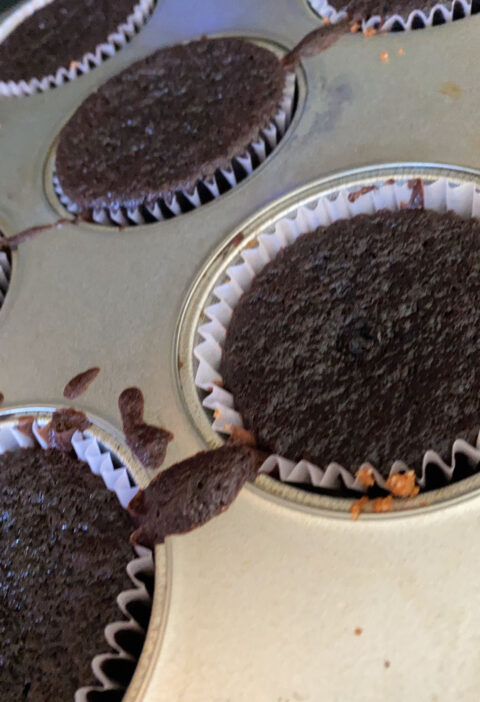1. Combine flour, baking powder, baking soda, salt, and sugar in a medium bowl and whisk until homogenous. Transfer to an airtight container.
This step is to incorporate all the dry ingredients before the leavening agents are activated. This is important because the baking powder and baking soda, being chemical agents, will react very quickly once exposed to a liquid, and immediately release carbon dioxide gas. It is crucial that the dry ingredients be mixed before this happens.
2. Place one batch of dry mix in a large bowl. In a medium clean bowl, whisk the egg whites until stiff peaks form. In a large bowl, whisk the egg yolks, buttermilk, and sour cream until homogenous. Slowly drizzle in the melted butter while whisking. Carefully fold in the egg whites with a rubber spatula until just combined. Pour the mixture over the dry mix and fold until just combined (there should still be plenty of lumps).
This step is separated into two parts. The egg whites are whisked to form a semisolid foam, which actually forms the base for a meringue. In this case however, the egg foam is used to make the end pancakes stand even taller and lighter. The reason this occurs is that air gets trapped inside the egg foam, which then expands as the pancakes cook, making them even lighter. This egg foam then gets incorporated into the rest of the wet ingredients, and again these are kept separate to prevent an early release of carbon dioxide gas.
3. Heat a large heavy-bottomed nonstick skillet over medium heat for 5 minutes (or use an electric griddle). Add a small amount of butter or oil to the griddle and spread with a paper towel until no visible butter or oil remains. Use a 1⁄4-cup dry measure to place 4 pancakes in the skillet and cook until bubbles start to appear on top and the bottoms are golden brown, about 2 minutes. Carefully flip the pancakes and cook on the second side until golden brown and completely set, about 2 minutes longer. Serve the pancakes immediately, or keep warm on a wire rack set on a rimmed baking sheet in a warm oven while you cook the remaining 3 batches.
The heavy bottomed skillet is used here because the pancakes are a very thin food item, even if extraordinarily fluffy. They will not take long to cook, and are thus easy to burn, but having a heavy bottom can help prevent potential burning. The butter and oil on the griddle are used to prevent the pancakes from sticking. Given that the pancakes are a thin item, a stovetop is a sufficient heat source, heating through conduction. In less than 5 minutes, the pancakes are ready, so cooking in an oven through convection is unnecessary. The bubbles are a sign that the pancakes are ready because this indicates the expansion of the batter by the carbon dioxide. The color is up to personal taste, though the use of baking soda can be used to affect the degree of the browning.
Reference:
Lopez-Alt, J. Serious Eats. https://www.seriouseats.com/light-and-fluffy-pancakes-recipe. (Accessed March 04, 2022).
